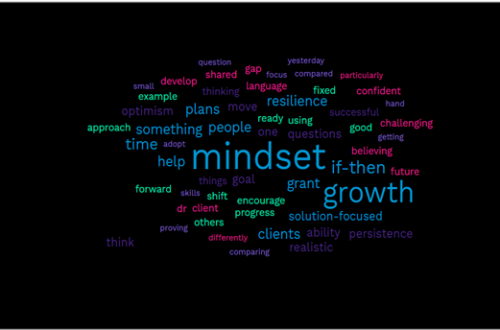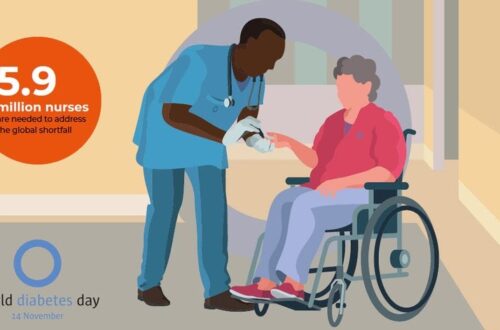
Photo taken on one of Tami’s pauses
When life gets crazy, as it often does for us, a strategy that we @AFreshPOVforYOU find particularly useful is taking a pause or break to help clear our minds and gain a fresh perspective. It could be a half hour, an afternoon, a day, or a week. Tami has found that when her mind is jumbled or she’s trying to work out a problem, taking a walk allows her to think, her creative juices to flow, and to gain a fresh perspective. (And sometimes even happen upon a stunning sunset view like the one above captured on a recent walk). Deb enjoys sitting outside in her backyard, enjoying the view of the trees, flowers and clear water in the pool. Even getting away from our desks and out of the office at lunch brings clarity and new thinking. We’ve found when we’re hit with “writer’s block”, just putting the project away for a day or two allows us to return with a clearer mind, new ideas and new perspective. Clients we’ve worked with have shared a variety of things they do to take a pause – from taking a long run, reading a pleasure book, mowing the yard, or simply sitting and being present in the moment, Taking that pause can change your perspective….much like “turning turtle” can. You can read more about “turning turtle” in our January 30, 2019 blog.
Have you tried stepping away for a bit when you’re in the midst of a challenge? Maybe you’re struggling with insurance benefits and getting your medication prescription filled, or maybe a co-worker questioned the food you were eating at lunch. (we know that never happens!) Taking a pause may sound counterproductive, but actually it’s not. As you step away, spend a moment acknowledging all the hard work you have done. Remind yourself what you’ve accomplished or what is going well, even though it may feel like the world is swirling around you.
The practice of using solutions focused brief therapy (SFBT) encourages the exercise of asking questions when trying to identify solutions. A key premise of SFBT is that the individual is the only person who can understand his or her own needs, strengths and capabilities. The practitioner can facilitate by asking questions. One opportunity to incorporate the practice of asking questions is during these moments when you need to pause and step away.
Here are 3 questions to consider to help guide your thinking and help gain perspective:
- Compliment yourself on your current efforts. What would you say to yourself?
- What good intentions did you have when you started out today?
- What is the most important quality you have and use when you are under stress or pressure and how can you leverage that now?
Asking yourself these questions when your mind is calm, and you are not distracted can help remind you of the resources you have within you and re-focus on your strengths.
We often find that the more challenging the season in life, the more often we need to pause. It’s an important part of self-care. Sometimes just stepping away from a situation for awhile helps to bring a fresh perspective.
Subscribe to our blog and we’ll email you when a new post is published!
Follow us on Twitter and Instagram @AFreshPOVforYou.






2 Comments
Sandra Pieschel
Do medical schools teach this? Listening to the patient is essential. Nurses & therapists are taught patient-centered approaches. Too many practitioners spend their “precious” time Telling” patients what they should do.
One of my best and favorite endocrinologists was trained at USC, and spends his time building great relationships with patients and their families and then telling them his recommendations. When they do not follow what he said ( ie “Take more basal insulin” following hypoglycemia episodes) he assumed he was failing. I asked why he did not use a CDE and he said he “was not taught that model”. I have another Type 1 patient with multiple tatoos and usually bright colored hair. She works as a makeup artist. She’s young and VERY smart. She has multiple autoimmune conditions and a lot of stories about how clinicians misjudge her. We met in an ICU after she had changed her pump site & it had kinked. The entire team from ED to ICU had passed judgement. In the first minute that I met her, I understood who she was- capable, frustrated, extremely informed and struggling for support. Her “normal-looking” mother came in and confirmed her stories of frustration about our system. This common POV starts in traing where I suspect there needs anoverhaul of how seasoned instructors refer to patients with diabetes as “Diabetics” and this pairs with old concepts of the condition being blamed on the person. Our training needs to infiltrate medical schools where physicians can be left to wonder why they should send patients to a Diabetes Educator. “What would a CDE do. . . “Teach them how to take a pill?”
Deborah Greenwood
Thanks Sandra, we would love to be part of this change and teach medical students. I know that Riva and Beau have taught students (see our blog from Feb 6th, It’s time ti Flourish https://bit.ly/2IzF1na ) Stay tuned for next week’s blog because I think it will resonate even more!!